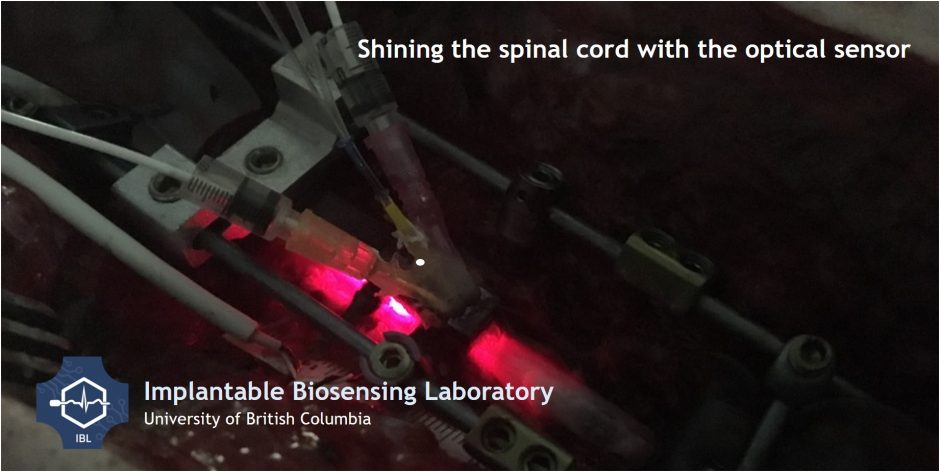
Acute spinal cord injury (SCI) is a devastating neurological condition resulting in permanent morbidity and impaired quality of life. In spite of advancements in the acute treatment of SCI, preventing neurological deficits in affected patients is highly limited. The hemodynamic management of acute SCI patients to maintain blood supply and maximize oxygenation of the injured spinal cord tissue is currently one of the few aspects of critical care in which clinicians can improve neurologic outcomes. However, optimizing the hemodynamic management in acute SCI is limited and challenging due to the lack of a real-time means for monitoring spinal cord blood flow, oxygenation, and hydrostatic pressure.
The ultimate goal of this research program is to facilitate the improvement of hemodynamic management and neurologic outcomes in acute spinal cord injury (SCI) patients. By establishing a new technique and developing an implantable optical sensor for noninvasive intraoperative and post-operative monitoring of spinal cord perfusion, oxygenation, and hydrostatic pressure, we introduce a new method of providing this critical information that clinicians can act upon to improve spinal cord hemodynamics, thus optimizing neurologic outcomes in patients affected by acute SCI.
Related Publications
- Sahragard F, et al. (2021); DOI: 10.1117/12.2585329
- Cheung A, et al. (2020); DOI: 10.1089/neu.2020.7086
- Shadgan B, et al. (2019); DOI: 10.1089/neu.2018.6208
- Shadgan B, et al. (2018); https://doi.org/10.1117/12.2286551
Supported By:


